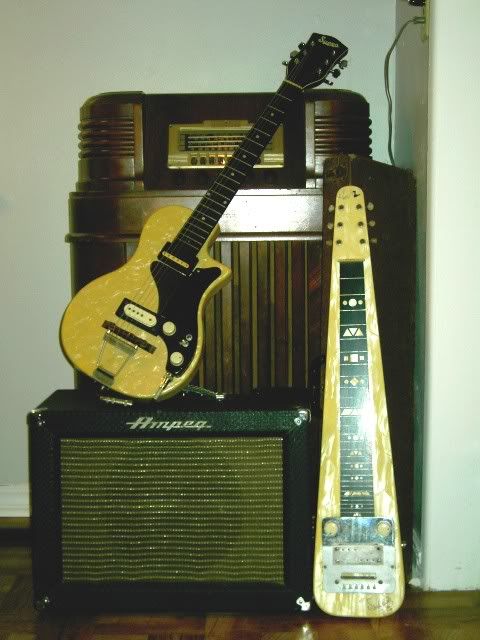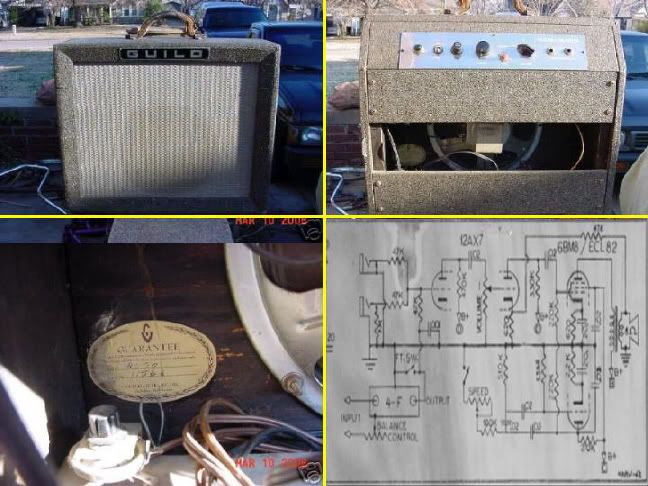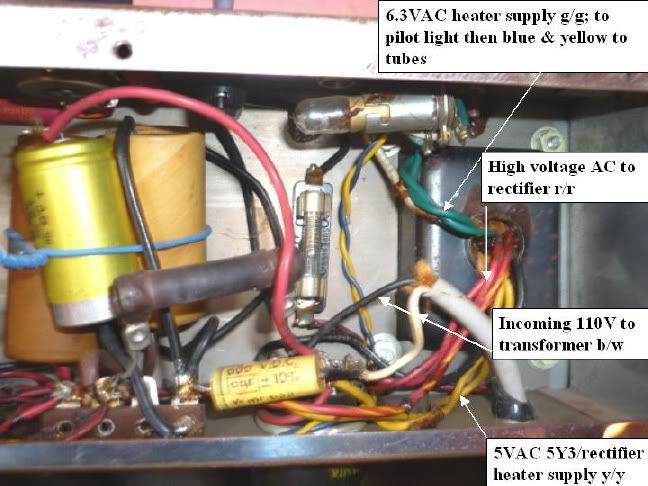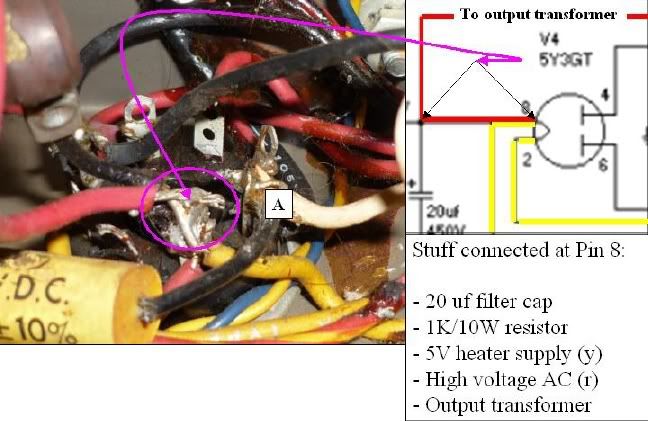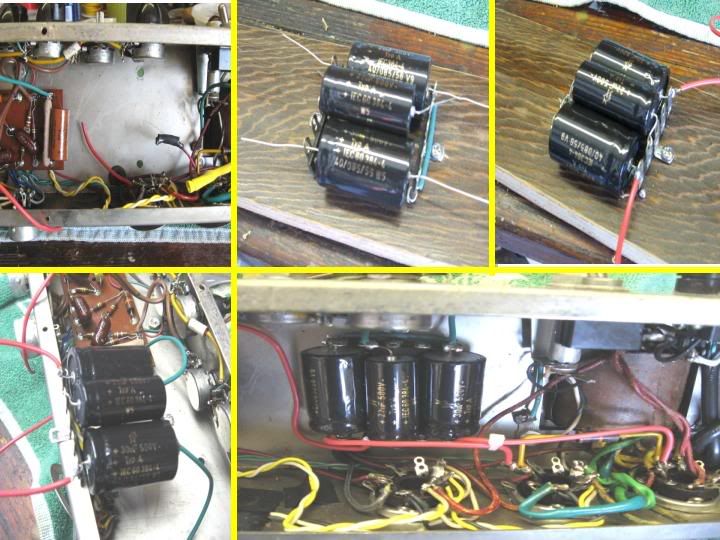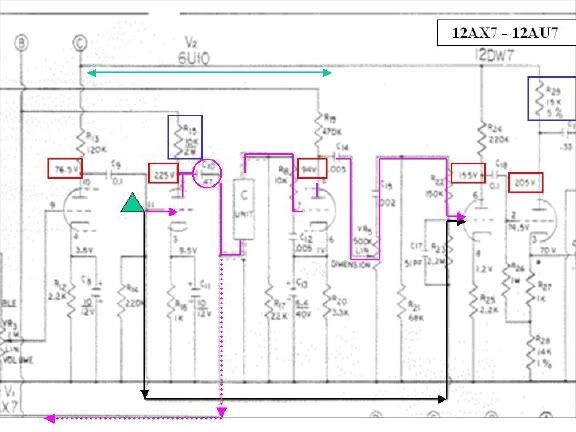littlesongs
Member
An Ampeg Echo-Jet arrived at the homestead just the other day. Thankfully, most of the news is good. Ugly as it looked in the auction pictures and sounded in the description, the amp hasn't been messed with all that much. The original footswitch, jumpers and reverb tank are all intact. The transformers and most components are just as they were in Linden. It even has the original Ampeg labeled 5Y3.
Because of the dicey ungrounded power cord, it hasn't been played a whole bunch. I haven't jumpered the Ampeg to the Sano to test the superdupergroovy outboard reverb feature either. Still, in no-frills Jet mode, it has a full, smooth and shimmery tone that defies the size of the cabinet. Although it is not a well-known nor celebrated tube, I think the 6D10 preamp sounds just fine feeding those 7591s. All Compactrons are long out of production, but thankfully this one can still be found. If I've read the date code right, the first owner blew up the original speaker and had it replaced with a Jensen Vibranto at some point in 1967. Aside from a bit of hum and a dirty tone pot, this amp sounds good. Plugging in a Guild might have had something to do with it too. :0)
Echo Jets debuted in 1963 as one of the first two Ampeg designs to use 7591 output tubes. From what I've gathered, this particular model of Echo Jet was only made for a handful of months. It is an EJ-12-A and the serial number seems to indicate it was the 16th amplifier completed in July of 1965. A little later in the year, the amp was redesigned again as the EJ-12-D. By 1966, the Echo Jet was gone. Although it is gonna take some time and work to get it into shape, I'm happy to have found this rare old bird.


Because of the dicey ungrounded power cord, it hasn't been played a whole bunch. I haven't jumpered the Ampeg to the Sano to test the superdupergroovy outboard reverb feature either. Still, in no-frills Jet mode, it has a full, smooth and shimmery tone that defies the size of the cabinet. Although it is not a well-known nor celebrated tube, I think the 6D10 preamp sounds just fine feeding those 7591s. All Compactrons are long out of production, but thankfully this one can still be found. If I've read the date code right, the first owner blew up the original speaker and had it replaced with a Jensen Vibranto at some point in 1967. Aside from a bit of hum and a dirty tone pot, this amp sounds good. Plugging in a Guild might have had something to do with it too. :0)
Echo Jets debuted in 1963 as one of the first two Ampeg designs to use 7591 output tubes. From what I've gathered, this particular model of Echo Jet was only made for a handful of months. It is an EJ-12-A and the serial number seems to indicate it was the 16th amplifier completed in July of 1965. A little later in the year, the amp was redesigned again as the EJ-12-D. By 1966, the Echo Jet was gone. Although it is gonna take some time and work to get it into shape, I'm happy to have found this rare old bird.
